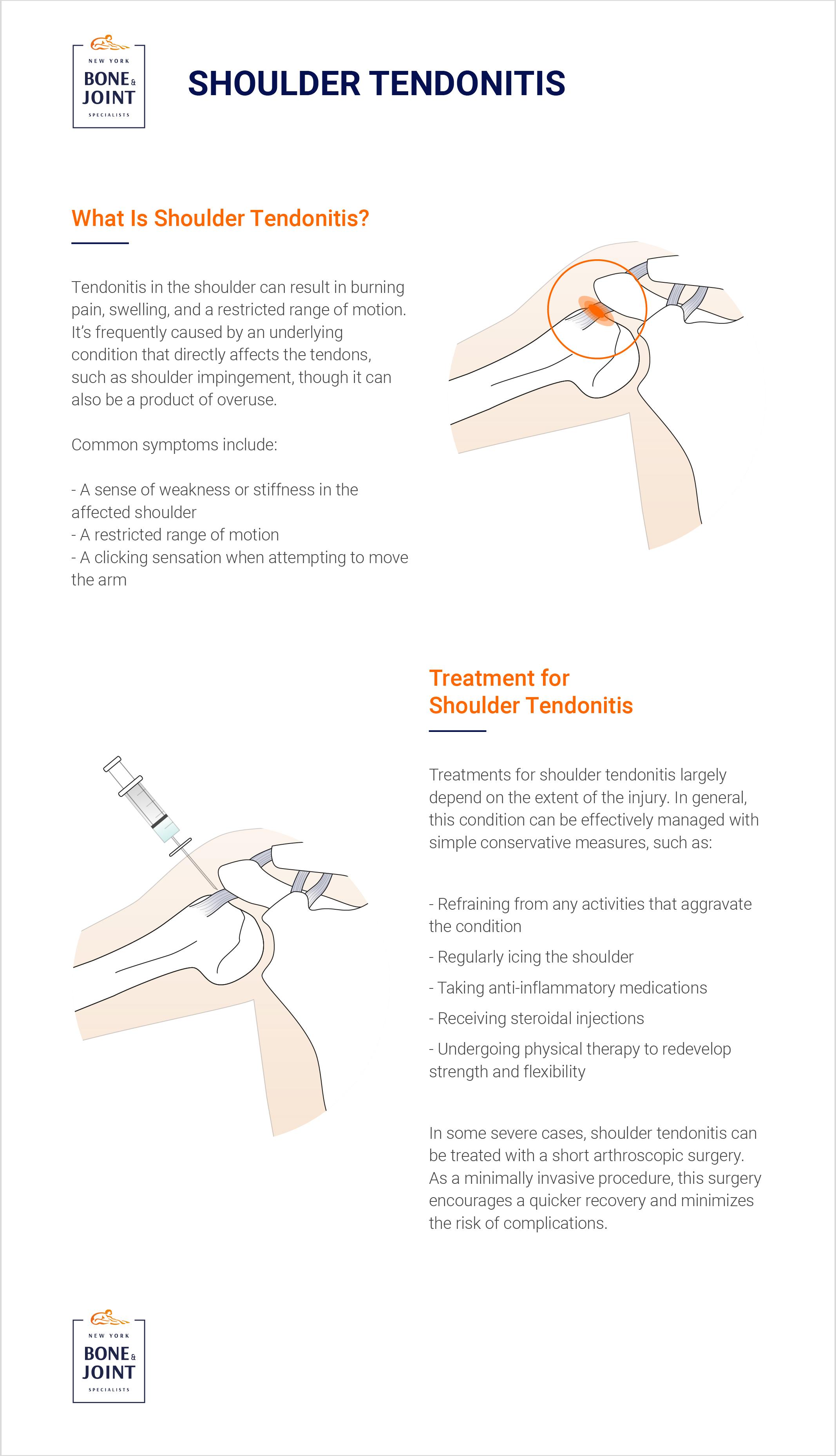WHAT IS TENDONITIS IN THE SHOULDER?
Tendonitis can affect any tendon in the shoulder, resulting in burning pain, swelling, and a restricted range of motion. It’s frequently caused by other underlying conditions that directly affect the tendons, such as shoulder impingement, though it can be a product of simple overuse. Regardless of the specific cause, tendonitis in the shoulder can largely prevent the injured joint from functioning properly, making it a potentially debilitating injury.
SHOULDER TENDONITIS SYMPTOMS
Shoulder tendonitis shares many of the same symptoms as tendonitis in other joints, with most patients reporting moderate to heavy pain and swelling in the shoulder and upper arm. Attempting to lift, lower, or lie on the arm can exacerbate the pain. Other common symptoms include:
- A sense of weakness or stiffness in the affected shoulder
- A greatly restricted range of motion
- A clicking sensation when attempting to move the arm
SHOULDER TENDONITIS TREATMENT
Treatments for shoulder tendonitis largely depend on the extent of the condition. In general, however, this condition can be effectively managed with some simple conservative measures. Surgery is recommended only in the most severe cases.
Conservative
Conservative treatments for shoulder tendonitis are largely designed to alleviate pain and inflammation and restore function to the shoulder. The most common include:
- Refraining from any activities that aggravate the condition
- Regularly icing the shoulder
- Taking anti-inflammatory medications
- Receiving steroidal injections
- Exercises intended to redevelop the surrounding muscles and rebuild flexibility in the tendons
Shoulder Tendonitis Surgery
In some severe cases, shoulder tendonitis can also be treated with a short arthroscopic surgery. During the procedure, your surgeon will view the damaged tendon with a small camera inserted into a small incision while operating on it through another opening, removing damaged tissue and mending any tears. As a minimally invasive procedure, it encourages a quicker recovery and minimizes the risk of surgical complications.











